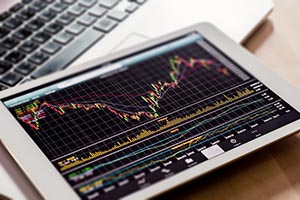What is the role of custodians in exchange-traded funds? Although most of their work occurs behind the scenes, custodians can be crucial to the success of ETFs. Learn how this unassuming player maintains process integrity and investor security against a variety of risks.
When financial advisors and their clients seek an investment vehicle, they usually want to know their investment will be secure in the care of a custodian. This consideration applies to exchange-traded funds (ETFs) just as it does to more traditional vehicles. In this article, we’ll examine some of a custodian’s major duties related to ETFs, and we’ll help you understand what qualities to look for in this important partner.
Safekeeping ETF assets
The primary role of custodians is to provide safekeeping for ETF assets.
The custodian will create an account for the ETF where they’ll hold the fund’s assets. There, the fund adviser can manage them for the benefit of its shareholders. Assets move in and out of the fund by means of creation and redemption – a process the custodian and transfer agent work in tandem to facilitate.
The transfer agent and authorized participants (APs) use the creation and redemption process to ensure accurate valuation and delivery of shares between parties. Most ETFs employ in-kind creation and redemption. This means shares of the ETF are exchanged in-kind for shares of the stocks the manager, or index, has chosen for the ETF.
This in-kind process follows a standardized and streamlined protocol to mitigate risk and provide operational and cost efficiencies. Here’s an example of how it works:
- An AP brings shares of the ETF’s basket, or actual holdings of the ETF, to the custodian and transfer agent for the ETF’s custody account.
- In return, the custodian and transfer agent give newly created shares of the ETF to the AP.
- The AP then gives these newly created ETF shares to the party for whom they performed the in-kind creation.
The custodian also coordinates with the fund’s administrator, accountant and distributor, all of whom help ensure the process goes as planned.
Read more: Understanding the role of authorized participants in exchange-traded funds
Providing other valuable services
Beyond safekeeping, an ETF custodian can provide additional services to the fund (e.g., securities lending, cash management). These responsibilities will be defined in the prospectus and approved and overseen by the fund board.
When an ETF institutes a securities lending program, the lending agent and the fund’s shareholders are usually the only recipients of its proceeds. The custodian will work with the fund to balance risk and reward related to pursuing additional shareholder revenue.
For example, a lending agent might keep 15%-20% of the securities lending revenue as facilitator and return the balance to the fund. These proceeds will add to the total return of the ETF realized by the shareholders.
Additionally, a custodian might take on the role of managing the ETF’s uninvested cash – offering the fund manager investment choices that strike the right balance between risk and reward.
Regulatory and security considerations
Most custodians are federally registered banks. In cases where they’re not, further oversight may be imposed, including, but not limited to, surprise audits.
Either way, a custodian must have an existing service model for ETFs that includes the proper tools, experience, operational efficiency and cost efficiency. They must also be nimble enough to adapt to the ongoing changes in the regulatory environment.
A robust cybersecurity program and a well-run compliance program are equally essential. ETFs will likely continue to move into new asset classes and regions of the globe. Custodians must be able to keep pace with the needs of the fund manager and the requirements of varied regulatory regimes.
Read more: Protecting client data through industry best practices
Overall, when an investment vehicle skillfully utilizes custodial services, it provides a greater sense of security to financial advisors and their clients. While nothing in the investment world is certain, choosing the right custodian for your ETF can mitigate unnecessary risks and improve confidence for all parties.
Regardless of your fund structure or strategy, U.S. Bank is ready to provide tailored support so you can achieve your business goals. Learn more about our custody solutions and other ETF products and services. For additional information, connect with our fund services experts.








































































